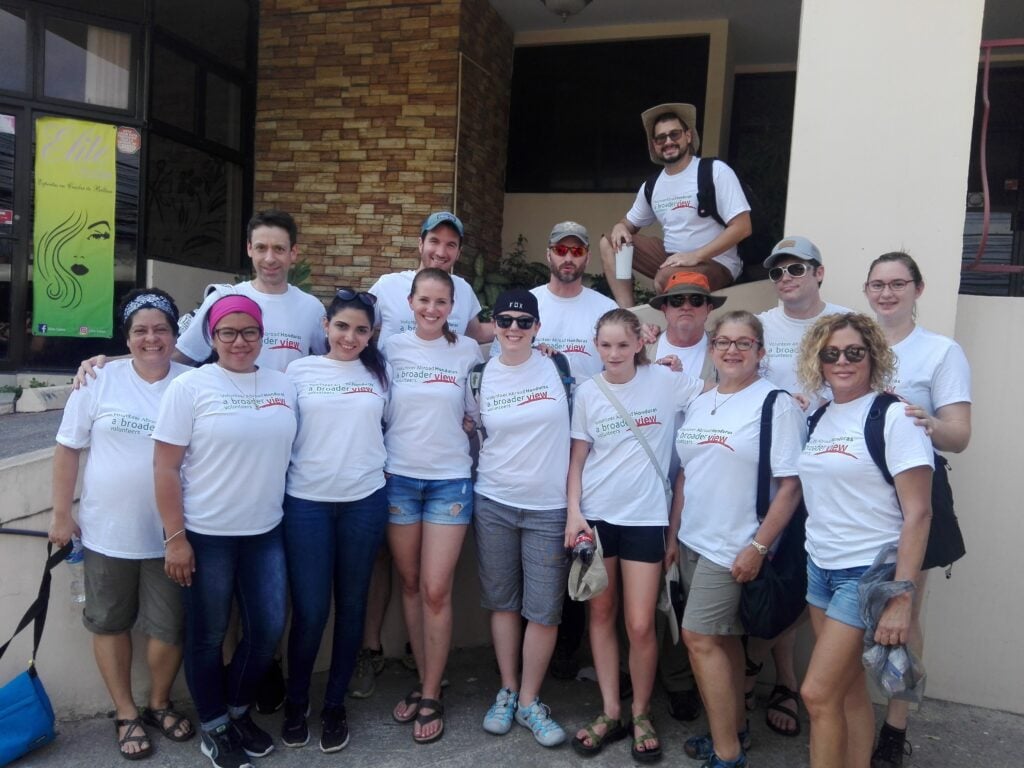Hey there! Have you ever wondered how communities around the world are developed and improved through sustainable projects? It’s fascinating to see how these initiatives can have a significant impact on people’s lives and the environment. In this article, we will explore the concept of community development and the role that sustainable projects play in creating positive change. So, let’s dive in and discover how these projects are making a real difference!
Community development refers to the process of enhancing the well-being and quality of life of individuals within a particular community. It involves implementing sustainable projects that address various social, economic, and environmental challenges faced by the community. These projects are designed to have a long-lasting impact and promote self-sufficiency among community members.

Sustainable projects are crucial in this context because they ensure that the positive changes achieved within a community are maintained over time. Instead of offering short-term solutions, sustainable projects focus on creating lasting benefits for the community and the environment. By addressing the root causes of issues and promoting resilience, these projects empower communities to become self-reliant and work towards a better future.
Identifying the needs of a community is the first step in community development and the foundation for planning sustainable projects. By understanding the challenges faced by the community, project planners can tailor their initiatives to address these specific needs effectively. This holistic approach ensures that the projects have the most significant impact and are genuinely beneficial to the community.
Throughout this article, we will delve into the various aspects of community development through sustainable projects. We will explore how to plan such projects, the different types of initiatives that can be undertaken, the implementation process, and how we measure the impact of these projects. We will also discuss the challenges faced and the solutions that can be implemented to overcome these hurdles. Additionally, we will examine some inspiring case studies of successful sustainable projects from around the world.

Are you excited to learn more about how communities are developed through sustainable projects? Let’s continue this journey and explore the world of community development together!
Understanding Community Development
Defining Community Development
Community development is a process that aims to improve the well-being of a community by addressing its needs and enhancing its capacity to create positive change. It involves active participation from community members, organizations, and stakeholders to identify and implement sustainable projects.
Community development projects focus on creating long-term solutions by empowering individuals and communities to take charge of their own development. These projects aim to address issues such as poverty, inequality, environmental degradation, and lack of access to basic services.
Importance of Sustainable Projects
Sustainable projects play a crucial role in community development. Unlike short-term solutions, sustainable projects are designed to have a lasting impact on the community, ensuring its continued growth and development. By implementing sustainable projects, communities can:
- Improve the quality of life for individuals and families
- Enhance educational opportunities and skills development
- Preserve environmental resources for future generations
- Enhance infrastructure and access to basic amenities
- Promote health and sanitation practices
- Foster economic empowerment and income generation
Identifying Community Needs
To effectively address community needs, it is essential to understand the priorities and aspirations of the community. This can be done through:
- Community Engagement: Engaging with community members through surveys, interviews, and focus group discussions to identify their needs, concerns, and desired outcomes.
- Data Analysis: Conducting thorough research and data analysis to understand the socio-economic conditions, demographic patterns, and existing gaps within the community.
- Collaboration with Stakeholders: Working closely with local government, NGOs, and other stakeholders to gain a comprehensive understanding of the community’s needs and potential resources.

By understanding the needs of the community, sustainable projects can be tailored to address the specific challenges and opportunities present in the community.
Remember, community development is a collaborative and ongoing process. It requires active participation and involvement from all stakeholders to create meaningful and lasting change. As Mahatma Gandhi wisely said, “The best way to find yourself is to lose yourself in the service of others.”
Planning Sustainable Projects
Planning sustainable projects is a crucial step in community development. It involves careful research, goal-setting, and stakeholder involvement to ensure the project is effective and meets the needs of the community. Here are some key steps to consider when planning sustainable projects:
Researching and Assessing
Before starting a project, it’s important to conduct thorough research to understand the context, challenges, and opportunities of the community. This involves gathering data on demographics, existing infrastructure, environmental conditions, and social factors. Through research, you can identify the specific needs and priorities of the community.
Tip:
“Take the time to listen to the community members and understand their perspectives. This will help you gain valuable insights and build trust.”
Setting Goals and Objectives
Once you have a clear understanding of the community’s needs, you can start setting goals and objectives for your project. Goals are the broad outcomes you want to achieve, while objectives are specific and measurable steps that will contribute to the goals. Make sure your goals and objectives are realistic and aligned with the community’s needs.
Tip:
“Involve the community in the goal-setting process. This will empower them and ensure that the project aligns with their aspirations.”
Involving Stakeholders
Stakeholder involvement is crucial for the success of any sustainable project. Stakeholders can include community members, local government, NGOs, business owners, and other relevant organizations. Engage stakeholders in the planning process to gain their support, input, and commitment. Collaboration and inclusivity will lead to a more effective and sustainable project.
Tip:
“Create a stakeholder map to identify all the key individuals and organizations. This will help you determine who to involve and how to communicate with them.”
By following these steps, you can ensure that the planning process is comprehensive, inclusive, and effective. Remember, involving the community and other stakeholders from the beginning will set a solid foundation for a successful sustainable project.
Types of Sustainable Projects
When it comes to community development, there are various types of sustainable projects that can have a lasting impact. These projects focus on improving the well-being of the community and addressing the specific needs and challenges they face. Let’s take a closer look at some of the key types of sustainable projects:
- Environmental Conservation: These projects aim to protect and preserve the environment, including initiatives such as reforestation, waste management, clean energy projects, and biodiversity conservation. By focusing on environmental sustainability, these projects promote a healthy natural ecosystem for the community.
- Education and Skill Development: Projects related to education and skill development play a crucial role in empowering individuals and equipping them with the knowledge and skills they need for personal and professional growth. These projects can include building schools, providing scholarships, vocational training programs, and promoting adult literacy.
- Infrastructure and Basic Amenities: Accessible infrastructure and basic amenities are essential for the well-being of any community. Sustainable projects in this category may include the construction of roads, bridges, water supply systems, sanitation facilities, and affordable housing. These projects aim to improve the overall quality of life for community members.
- Healthcare and Sanitation: Projects focused on healthcare and sanitation address the crucial need for accessible healthcare services and clean sanitation facilities. These projects can include building medical clinics, providing medical supplies and equipment, promoting hygiene practices, and implementing community health programs.
- Economic Empowerment: Economic empowerment projects aim to uplift communities by providing opportunities for entrepreneurship, job creation, and income generation. These projects may involve vocational training programs, microfinance initiatives, business development support, and market access programs.
These are just a few examples of the types of sustainable projects that can make a significant impact on community development. It’s important to note that these projects are tailored to the specific needs and context of each community. By addressing these different aspects, sustainable projects can contribute to the overall development and well-being of the community.
“Sustainable development is about transforming the way we do business and the way we live, to ensure we can meet the needs of the present without compromising the ability of future generations to meet their own needs.” – Ban Ki-moon
Implementing Sustainable Projects
Implementing sustainable projects is a crucial step in community development. It involves putting plans into action and making a tangible impact on the lives of community members. Here are some key considerations and steps to follow when implementing sustainable projects:
Allocating Resources
- Before starting any project, it is important to allocate the necessary resources, including funds, materials, and manpower. This will ensure that the project has the necessary support to be successfully implemented.
- Conduct a thorough assessment of the project requirements and determine the budget needed to complete the project. This will help in prioritizing resources and making informed decisions.
Building Partnerships
- Building collaborations and partnerships with various stakeholders is essential for the success of sustainable projects. It helps in leveraging expertise, resources, and networks, and ensures that the project aligns with the needs and aspirations of the community.
- Identify potential partners such as local NGOs, government agencies, community organizations, and businesses that share a common vision. Collaborate with them to pool resources, share responsibilities, and create a more sustainable impact.
Monitoring and Evaluation
- Implementing sustainable projects requires continuous monitoring and evaluation to ensure that the desired outcomes are being achieved. Regular monitoring helps in identifying any issues or challenges that may arise and allows for timely interventions.
- Develop a monitoring and evaluation plan that includes key performance indicators (KPIs) to measure the success of the project. This can include indicators such as increased access to education, improved health outcomes, or reduced environmental impact.
- Collect data on a regular basis to track progress and evaluate the impact of the project. This can be done through surveys, interviews, focus groups, or other data collection methods. Use this data to inform future decision-making and improve the effectiveness of the project.
Implementing sustainable projects requires careful planning, collaboration, and monitoring. It is important to engage the community throughout the process and ensure that the project is aligned with their needs and aspirations. By allocating resources effectively, building partnerships, and implementing a robust monitoring and evaluation system, sustainable projects can make a lasting impact on communities.
Measuring Impact
In community development, measuring the impact of sustainable projects is crucial to ensure their effectiveness and success. It helps organizations and communities understand the progress made, identify areas of improvement, and make informed decisions for future initiatives. Measuring impact allows us to determine the extent of positive change brought about by these projects and whether they are meeting their intended objectives. Here are some key steps involved in measuring the impact of sustainable projects:
Establishing Indicators
Indicators are specific metrics or variables that can be used to measure progress and determine the impact of a project. These indicators should be aligned with the goals and objectives of the project. For example, if the goal is to improve education, indicators could include literacy rates, school attendance, or graduation rates. By establishing relevant indicators, organizations can track and measure progress effectively.
Collecting Data
Data collection plays a vital role in measuring impact. It involves gathering information through surveys, interviews, observations, and existing data sources. Organizations should ensure that data collection methods are reliable, consistent, and representative of the community or population being assessed.
Analyzing and Reporting Results
Once data has been collected, it needs to be analyzed to derive meaningful insights and assess the impact of the project. Data analysis can involve statistical methods, qualitative analysis, or a combination of both. The results of the analysis should be presented in a clear and concise manner, highlighting the key findings and trends. This information can be used to inform decision-making, project enhancement, and future planning.
Measuring impact is not a one-time process but should be conducted at different stages of a sustainable project’s lifecycle. Regular monitoring and evaluation allow for continuous improvement and adaptation to changing needs and circumstances.
“Without data, you’re just another person with an opinion.” – W. Edwards Deming
Importance of Measuring Impact
Measuring impact has several benefits, including:
- Accountability: It holds organizations and stakeholders accountable for the resources invested in sustainable projects. It helps ensure that funds are used effectively and efficiently to bring about positive change.
- Learning and Improvement: Measuring impact provides valuable insights into what works and what doesn’t. It enables organizations to learn from past experiences, identify best practices, and improve project design, implementation, and management.
- Evidence-based Decision Making: Measuring impact provides evidence to support decision-making. It helps organizations make informed choices regarding project continuation, scaling up, replication, or modification.
- Communication and Transparency: Impact measurement can enhance communication and transparency with project beneficiaries, donors, and other stakeholders. It demonstrates commitment to accountability and provides evidence of the project’s impact and value.
By measuring impact, sustainable projects can demonstrate their value, inspire others, and contribute to the overall development of communities. Through continuous improvement and learning, these projects can create lasting positive change.
Challenges and Solutions
Community development through sustainable projects is not without its challenges. However, with proper planning and strategic thinking, these challenges can be overcome. Here are some common challenges that organizations face when undertaking sustainable projects, along with potential solutions:
1. Limited Funding
One of the biggest challenges faced by organizations is limited funding for sustainable projects. Without sufficient financial resources, it can be difficult to implement and maintain projects that address community needs. However, there are ways to overcome this challenge:
- Seeking Grants and Donations: Organizations can actively pursue grants and donations from various sources such as government agencies, foundations, corporations, and individual donors. This requires research, networking, and writing compelling grant proposals.
- Fundraising Events: Hosting fundraising events, such as charity runs, auctions, or benefit concerts, can help generate funds for sustainable projects. These events not only raise money but also provide an opportunity to engage and involve the community.
- Collaborating with Other Organizations: Partnering with other organizations that share similar goals and objectives can help pool resources and share costs. Working together can also increase the visibility and impact of sustainable projects.
2. Engaging the Community
Engaging and involving the community is crucial for the success of sustainable projects. However, it can be challenging to garner interest and participation. Here are some solutions to overcome this challenge:
- Community Input and Participation: Involve the community from the early planning stages of the project. Conduct surveys, hold town hall meetings, or establish community-led committees to ensure that the project aligns with their needs and aspirations. This creates a sense of ownership and increases community support.
- Education and Awareness: Raise awareness among community members about the project’s goals, benefits, and how they can contribute. Conduct workshops, training programs, or informational sessions to educate them about the importance of sustainable development.
- Inclusivity and Collaboration: Foster a sense of inclusivity by involving different demographic groups, such as women, youth, or marginalized communities, in the decision-making process. Emphasize collaboration and teamwork to ensure that everyone feels valued and heard.
3. Sustainability and Long-term Maintenance
Sustainability is a key aspect of community development through sustainable projects. Ensuring that the projects have a lasting impact and can be maintained in the long run can be challenging. Here are some solutions:
- Capacity-Building: Equip the community with the necessary skills and knowledge to maintain and manage the project after its completion. Offer training programs or workshops on project management, financial literacy, or technical skills that are relevant to the project.
- Infrastructure Maintenance: Develop a plan for ongoing maintenance and repairs of the project infrastructure. Allocate funds for regular inspections, upkeep, and repairs to ensure that the project remains functional and in good condition.
- Partnerships and Collaboration: Forge partnerships with local government bodies, community organizations, or businesses to ensure the long-term sustainability of the project. These partnerships can help in securing resources, funding, and expertise for ongoing support.
By addressing these challenges and employing the suggested solutions, organizations can overcome obstacles and make a significant impact on community development through sustainable projects. Remember, community development is an ongoing process, and it requires perseverance, dedication, and adaptability to create sustainable change.
Case Studies of Successful Projects
In this section, we will take a closer look at some inspiring case studies of successful community development projects that have made a lasting impact. These projects showcase the power of sustainable initiatives and the positive change they can bring to communities.
1. Project Green Earth: Environmental Conservation
Overview:
Project Green Earth is a community-led initiative focused on environmental conservation in a rural village. The project aims to promote sustainable practices, protect local biodiversity, and enhance the livelihoods of the community members.
Goals and Objectives:
- Planting trees to combat deforestation and preserve the local ecosystem.
- Implementing sustainable farming practices to reduce the use of harmful pesticides and promote organic agriculture.
- Educating the community on the importance of preserving natural resources and wildlife.
Impact:
- Increased forest cover by 30% over the past five years, contributing to better air quality and reduced soil erosion.
- Improved agricultural practices have led to increased crop yields and improved food security for the community.
- The project has created green jobs and income-generating opportunities for community members through eco-tourism and organic farming.
2. Bright Minds Academy: Education and Skill Development
Overview:
Bright Minds Academy is an educational institution established in an underserved urban area. The project focuses on providing quality education and skill development opportunities to children from disadvantaged backgrounds.
Goals and Objectives:
- Offering accessible and affordable education to children who would otherwise lack access to quality schooling.
- Providing vocational training and skills development programs to empower students for future employment opportunities.
- Ensuring gender equality by promoting equal enrollment and educational opportunities for girls.
Impact:
- Increased enrollment rates and reduced dropout rates among children in the community.
- Improved educational outcomes with a significant increase in the number of students transitioning to higher education.
- Graduates from vocational training programs have secured jobs within the community, contributing to local economic growth.
3. Water for All: Infrastructure and Basic Amenities
Overview:
Water for All is a project aimed at providing clean drinking water and sanitation facilities in a remote village that previously lacked access to these basic amenities.
Goals and Objectives:
- Building a water treatment plant to provide clean and safe drinking water to the community.
- Installing adequate sanitation facilities to promote proper hygiene practices and reduce the risk of waterborne diseases.
- Educating the community on the importance of clean water and proper sanitation practices for overall health and well-being.
Impact:
- Improved health and reduced waterborne diseases due to access to clean drinking water and proper sanitation facilities.
- Increased school attendance as children no longer need to fetch water from distant sources, saving time for education.
- Community members have actively participated in maintaining the infrastructure, ensuring its long-term sustainability.
These case studies highlight the transformative power of sustainable projects in community development. By addressing specific needs and involving the community in every step of the process, these projects have achieved remarkable outcomes and created a lasting positive impact. Through proper planning, implementation, and monitoring, sustainable projects can make a significant difference in improving the lives of individuals and communities.
Conclusion
In conclusion, community development through sustainable projects is a powerful tool for creating positive change and improving the lives of individuals and communities. By understanding the principles of community development, planning and implementing sustainable projects, and measuring impact, we can make a significant difference in the world.
It is crucial to recognize that community development is not a one-size-fits-all approach. Each community has its unique needs and challenges, and it is essential to tailor projects to address these specific issues. By involving stakeholders and conducting thorough research and assessments, we can ensure that our projects are relevant and effective.
Sustainable projects are vital because they have long-term benefits and ensure the well-being of both current and future generations. By focusing on areas such as environmental conservation, education and skill development, infrastructure and basic amenities, healthcare and sanitation, and economic empowerment, we can create sustainable change in communities.
Implementing sustainable projects requires careful planning, resource allocation, and building strong partnerships. Monitoring and evaluation play a crucial role in assessing the impact of our projects and making necessary adjustments. By establishing indicators, collecting data, and analyzing results, we can ensure that our efforts are making a tangible difference.
While community development through sustainable projects is incredibly rewarding, it also comes with its fair share of challenges. Limited funding, engaging the community, and ensuring long-term sustainability and maintenance are some common obstacles. However, with innovative solutions, collaboration, and a commitment to the cause, these challenges can be overcome.
To gain inspiration and learn from successful examples, exploring case studies of impactful projects is invaluable. These real-life examples showcase the power of sustainable projects and the positive changes they can bring to communities. By studying these case studies, we can draw insights and apply them to our own projects.
In summary, community development through sustainable projects is a powerful way to make an impact and create lasting change. By understanding the principles, planning effectively, implementing thoughtfully, and measuring the impact of our efforts, we can contribute to a better world. Let us continue to strive for communities that thrive and individuals who have the opportunity to reach their full potential.
Frequently Asked Questions
- What is community development?
Community development refers to a process where individuals and organizations work together to improve the wellbeing and quality of life within a specific community. It involves initiating sustainable projects and activities to address social, economic, and environmental issues.
- Why is community development important?
Community development is important as it empowers communities to create positive change from within. It fosters social cohesion, enhances community resilience, promotes inclusivity, and ensures sustainable development that meets the needs of present and future generations.
- How can sustainable projects contribute to community development?
Sustainable projects play a vital role in community development as they focus on meeting the needs of the present without compromising the ability of future generations to meet their own needs. These projects promote environmentally-friendly practices, economic stability, social equity, and cultural preservation.
- What are examples of sustainable projects in community development?
Examples of sustainable projects in community development may include the establishment of community gardens, renewable energy initiatives, waste management programs, vocational training centers, water conservation projects, affordable housing initiatives, and educational programs focused on sustainability.
- How can individuals get involved in community development through sustainable projects?
Individuals can get involved in community development through sustainable projects by volunteering their time and skills, joining local organizations and nonprofits, participating in community meetings and events, advocating for sustainable initiatives, and supporting local businesses that prioritize community development.
-
Volunteering Abroad with Medical Missions: Make a Difference Today

Join medical group trips, Nurses Without Borders, and Dentists Without Borders to make a difference in underserved communities worldwide. Learn about the countries where these programs operate and read real-life experiences from volunteers. Volunteering overseas is an excellent opportunity to make a difference in the lives of others while experiencing new cultures and forging unforgettable…
-
Embrace Overseas Service | Transform Lives Through Global Volunteerism

International Volunteering: Discover Meaningful Travel and Transform Lives with A Broader View
-
A World of Opportunities: Unveiling the Benefits of International Volunteer Programs

Discover numerous benefits of international volunteer programs and unleash a world of rewarding opportunities with our in-depth guide.



